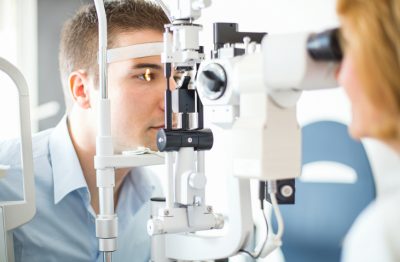Trustworthy Opticore Optometry: Raising Your Eye Health Experience
Trustworthy Opticore Optometry: Raising Your Eye Health Experience
Blog Article
The Comprehensive Eye Exam: What to Anticipate Throughout Your Visit to the Eye Physician
A browse through to the eye medical professional for a comprehensive eye examination is more than a routine check-up; it is a vital step in protecting your visual health and wellness. What precisely occurs during the eye wellness analysis, and exactly how does it influence the prescription process?
First Assessment
The first consultation during an eye test functions as an essential foundation for recognizing a patient's aesthetic wellness demands. This phase sets the tone for the whole assessment process, permitting the optometrist to collect necessary info regarding the person's case history, way of living, and particular vision problems. By thoroughly examining any type of pre-existing problems, drugs, or previous surgical treatments, the eye care expert can tailor the assessment to attend to individual needs properly.

Moreover, the first assessment is a chance for clients to voice any kind of concerns or concerns, fostering a collective relationship with their health care service provider. This interaction not just makes sure that the client feels informed and comfy yet likewise encourages them to get involved proactively in their eye health monitoring. Jointly, these discussions make it possible for the optometrist to devise a personalized assessment plan, guaranteeing optimum care and specific medical diagnosis.
Visual Acuity Test
Kicking off the core elements of an eye evaluation, the visual acuity test is made to evaluate the sharpness and clearness of a person's vision. This essential evaluation helps identify exactly how well a person can discern letters or signs at a standard distance, usually making use of a Snellen graph (Optometrist Riverside). The chart makes up rows of letters that decrease in size inside out, with the person placed at a popular range of 20 feet
During the examination, the patient is asked to cover one eye and check out aloud the smallest line of letters they can see plainly. This procedure is repeated for the other eye. The outcomes are taped as a portion, with 20/20 vision indicating normal aesthetic acuity-- where the patient can see at 20 feet what a person with regular vision can see at that range.
The visual acuity examination also recognizes potential refractive errors such as astigmatism, hyperopia, or nearsightedness, which could demand corrective lenses. By establishing a standard of aesthetic efficiency, the test is a crucial diagnostic device that aids the eye treatment expert in developing a proper therapy strategy customized to the person's one-of-a-kind visual needs.
Eye Wellness Analysis
Complying with the aesthetic skill test, a thorough eye health analysis is conducted to ensure the total wellness of the eyes. This critical sector of the eye test entails a thorough examination of both the outside and interior structures of the eye.
Through the use of ophthalmoscopy or fundus photography, the retina, optic nerve, and blood vessels are meticulously examined. In many situations, student expansion is carried out to enhance presence of the inner eye structures, although this may result in short-lived light sensitivity for the individual.
In addition, intraocular pressure is measured to screen for glaucoma threat. This is commonly done making use of tonometry, which can find raised pressure degrees that could recommend potential damage to the optic nerve. Collectively, these evaluations develop a thorough evaluation to keep eye wellness.
Refraction and Prescription
Refraction is an advanced procedure conducted by eye treatment experts to identify the precise lens power required to remedy refractive errors such as nearsightedness, hyperopia, presbyopia, and astigmatism. The objective of this procedure is to assess just how light bends as it passes with the eye, allowing the expert to identify whether corrective lenses are needed for improved aesthetic acuity.
Throughout the refraction process, the patient is asked to look via a phoropter, a gadget that includes numerous lenses. The specialist will methodically alter these lenses and ask the person to compare quality between alternatives until the ideal possible vision is attained. This procedure is important in crafting an accurate prescription that defines the appropriate lens power for glasses or call lenses.
The prescription originated from this treatment not just maximizes vision however additionally works as a structure for picking appropriate corrective glasses. It is important to make sure that prescriptions are regularly updated, as adjustments in you could try these out vision can occur in time, stressing the importance of routine eye assessments. This meticulous interest to information helps preserve clear, comfortable vision in daily life.
Follow-Up Suggestions

Throughout a follow-up browse through, the eye medical professional will conduct a collection of examinations to examine visual acuity and look for any type of adjustments in vision that could demand an upgrade to the prescription. Furthermore, the follow-up offers an opportunity to review any type of discomfort or concerns experienced click this with present eyewear. Changes can be made to make sure comfort and efficacy, whether via lens adjustment or frame changes.
For clients with ongoing problems such as glaucoma, diabetes-related eye issues, or macular deterioration, more constant follow-ups may be necessary. These visits are critical for handling and possibly slowing down the progression of eye illness. Complying with these referrals can considerably add to preserving visual wellness and avoiding lasting issues.
Conclusion
The comprehensive eye test is a necessary process for preserving aesthetic health, including a detailed evaluation of case history and vision worries. Key components consist of the aesthetic acuity examination, which assesses vision quality, and the eye health evaluation, which checks out the overall condition of the eyes. Refraction examinations help figure out the precise lens prescription needed for optimum vision adjustment. Follow-up suggestions give guidance for continuous eye care, guaranteeing that any possible concerns are resolved without delay and effectively.
A browse through to the eye medical professional for a thorough eye test is even more than a routine check-up; it is an essential step in safeguarding your aesthetic wellness.Kicking off the core elements of an eye evaluation, the visual skill examination is created to evaluate the sharpness and quality of a person's vision.Complying with the visual acuity examination, a detailed eye health and wellness assessment is performed to make sure the general well-being of the eyes. These gos to allow the eye care professional to monitor adjustments in vision, update prescriptions, and assess the total wellness of the eyes. Key parts include the visual skill test, which examines eyesight quality, and the look at these guys eye health and wellness assessment, which takes a look at the total problem of the eyes.
Report this page